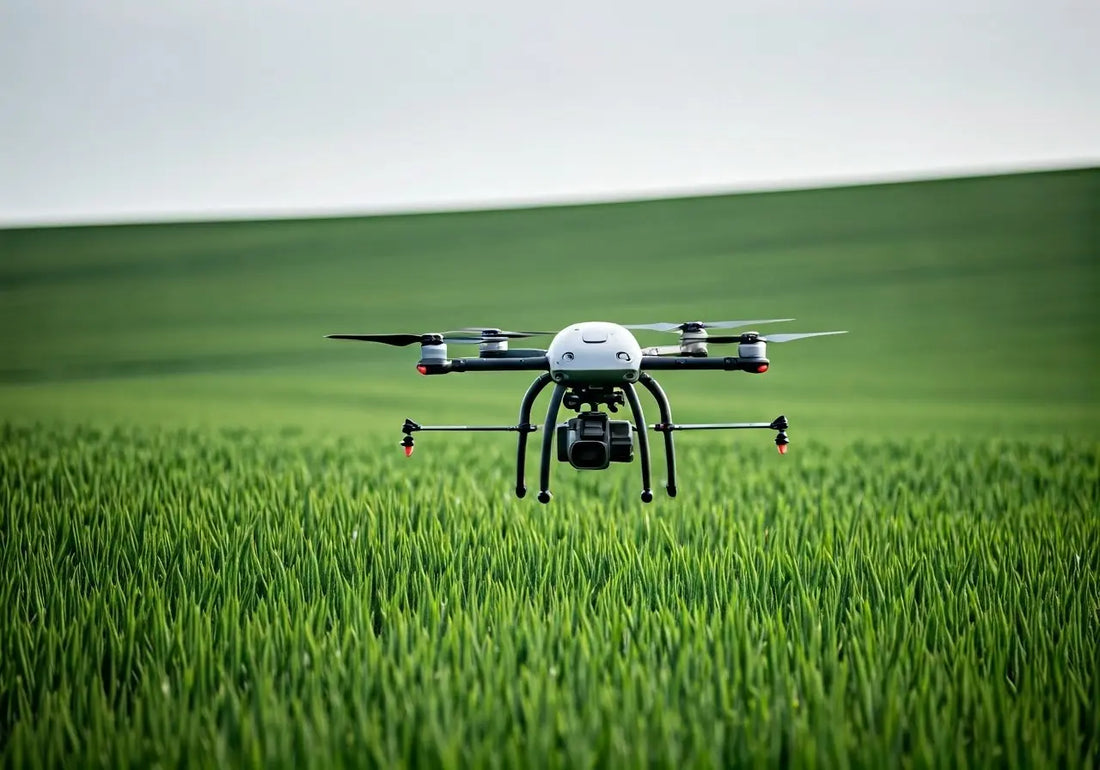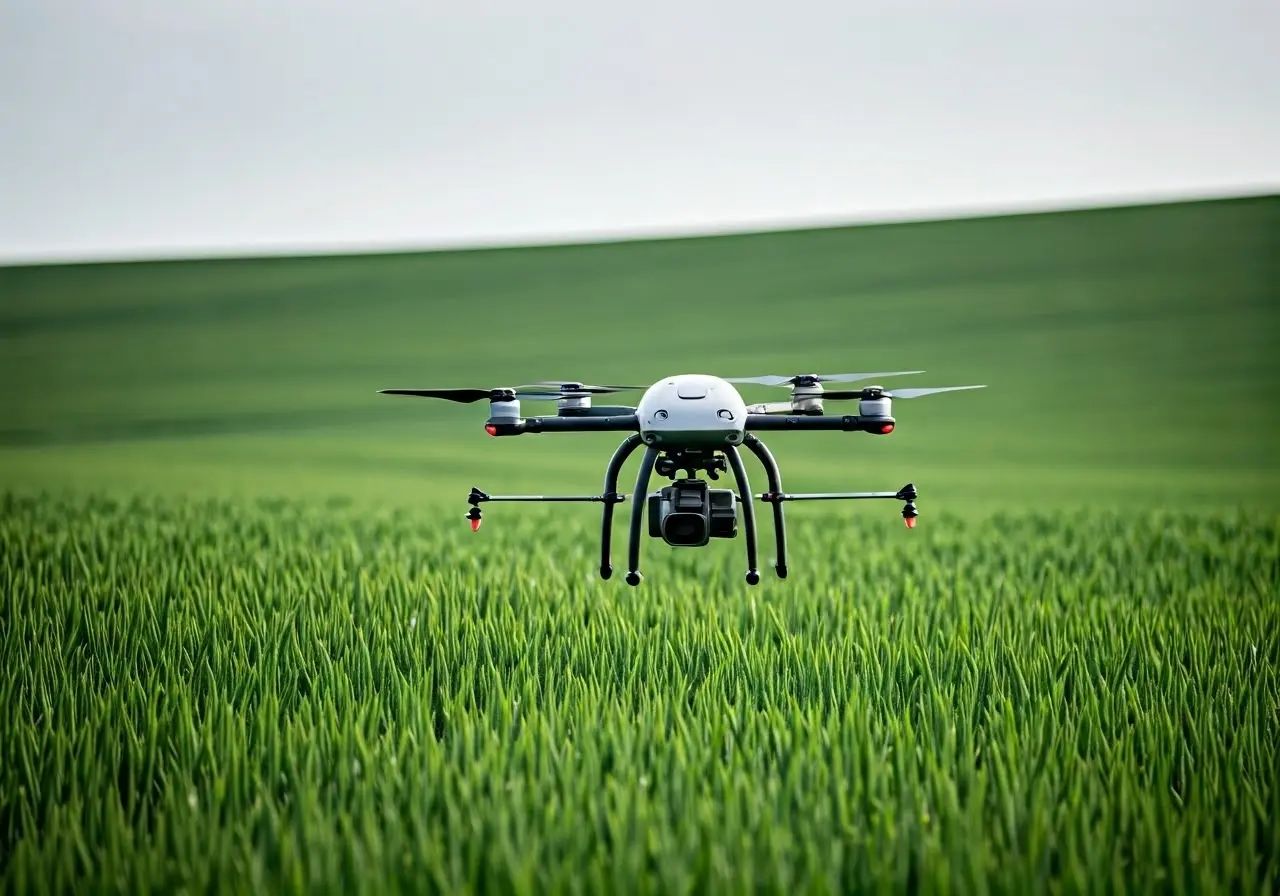
12 Innovative UAV Crop Spraying Solutions for Increased Yields
Share
In today’s fast-paced agricultural world, maximizing crop yield is more important than ever. UAV crop spraying offers innovative solutions that are reshaping how farmers approach pest and nutrient management. This blog will explore some of the most forward-thinking UAV crop spraying solutions that are making waves in the industry.
1. Precision Spraying Through GPS Technology
The integration of GPS technology into UAV crop spraying systems has truly revolutionized precision agriculture. By providing exact coordinates, drones can apply fertilizers and pesticides with pinpoint accuracy. This precision reduces waste and ensures that every corner of the field receives just the right amount of treatment, reducing the risk of over-spraying and its associated environmental impacts. With the assistance of GPS, UAVs can navigate complex terrains, ensuring safety and efficiency in every mission. For farmers, this means greater control over their agricultural inputs, ultimately leading to enhanced yield outcomes.
Moreover, the ability of GPS to work alongside automated flight planning means that drones can cover large acreages without human intervention. This autonomy not only reduces labor costs but also addresses challenges like human error and fatigue, which are common in traditional crop spraying methods. In addition to making micro-level spray adjustments, this tech-driven approach integrates seamlessly with existing farm management systems, further streamlining farm operations. As more farmers adopt these technologies, the agricultural industry edges closer to a future where manual adjustments become a thing of the past, leaving room for data-driven decision-making.
2. Adaptive Aerosol Distribution
Adaptive aerosol distribution is one of the latest advancements in UAV technology that has changed the game for crop spraying. These systems can adjust spray patterns in real time based on environmental conditions and crop requirements. By analyzing factors such as wind speed, temperature, and humidity, UAVs ensure that the spray reaches its target with minimal drift, enhancing the effectiveness of the treatment. This adaptability maximizes resource use efficiency, reducing waste and conserving valuable inputs like water and pesticides, which is crucial for sustainable agricultural practices.
3. Real-time Data Analytics for Better Decision Making
UAVs equipped with real-time data analytics capabilities are transforming how farmers approach decision-making. These drones collect an array of data points from each flight, including soil moisture levels, plant health indices, and pest infestation zones. By processing this data swiftly, farmers can gain actionable insights into their fields’ conditions, allowing them to address issues before they escalate. For example, if a UAV detects a dry patch early on, farmers can adjust their irrigation schemes accordingly, preventing potential yield losses. This proactive approach not only saves time and resources but also enhances the overall health and productivity of the crop.
4. Autonomous Flight Paths for Efficiency
Autonomous flight paths are at the forefront of UAV technology, allowing drones to plan and execute flight patterns with minimal human intervention. This innovation ensures drones are always on the most efficient route, covering specific areas that need attention without wasting time retracing steps. By pre-programming these flight paths, farmers can ensure continuous crop health monitoring, which is particularly useful during peak growing seasons when timely interventions are critical. Not only does this improve efficiency, but it also reduces operational costs, making it an economically feasible solution for larger farms as well as smaller operations.
5. Smart Sensors for Enhanced Detection
The implementation of smart sensors in UAV systems takes crop monitoring to the next level, offering unparalleled accuracy in detecting pest and disease outbreaks. These sensors can analyze spectral signals emitted by crops to identify stress factors, such as nutrient deficiencies or pest infestations. Early detection means that farmers can take preemptive action, applying treatments precisely where needed and avoiding blanket spraying that can lead to pesticide resistance. Smart sensors also optimize the use of inputs, as they guide UAVs to apply treatments only where necessary, preserving both environmental balance and farm resources.
6. Sustainable Practices with Eco-friendly Solutions
As the agricultural sector seeks to reduce its environmental footprint, UAVs play a vital role by promoting sustainable farming practices. Drones can significantly limit the use of chemicals, ensuring they’re only applied in targeted areas rather than across entire fields. By doing so, they preserve soil health and protect beneficial insects that are crucial for pollination and pest control. Moreover, UAVs contribute to water conservation by enabling more precise irrigation scheduling. With such eco-friendly solutions, farmers are better equipped to maintain productivity while adhering to environmental standards.
7. Integration with Farm Management Systems
The integration of UAV data with existing farm management systems offers seamless operation and improved decision-making for farmers. These drones collect comprehensive data on crop conditions, which can directly feed into management software used for overseeing farm activities. This harmony between technology and traditional systems means that farmers can plan, implement, and monitor their strategies more effectively. Whether it’s scheduling harvest times or adjusting pesticide use, the ability to combine UAV insights with management tools ensures operations run smoothly and efficiently.
8. Variable Rate Application for Resource Optimization
Variable rate application technology is revolutionizing how resources are utilized on farms. By analyzing the variability in fields, UAVs can adjust the application rates of fertilizers and pesticides to match the exact needs of different field zones. This precision ensures that each part of the field receives the optimal amount of resources, minimizing waste and maximizing crop yields. It’s a smart way to address the challenges of resource scarcity while promoting sustainable agriculture practices.
9. Enhanced Coverage with Multi-rotor Drones
Multi-rotor drones provide enhanced coverage for crop spraying due to their agility and ability to hover in place. Unlike fixed-wing drones, multi-rotors can navigate precisely around obstacles and cover irregularly shaped fields with ease. This capability ensures that drones are more flexible and efficient in variable field conditions, providing comprehensive coverage without leaving untreated patches. The maneuverability of multi-rotors allows for detailed and focused applications, ensuring every section of a field benefits from necessary treatments.
10. Monitoring and Mapping with HD Imaging
High-definition imaging is a game-changer for monitoring crop health and mapping agricultural fields. UAVs equipped with advanced cameras can capture detailed visuals that reveal insights into plant health, disease presence, and soil conditions. This imagery can be transformed into comprehensive maps that highlight areas requiring attention, allowing farmers to plan targeted interventions. With HD imaging, farmers gain a clear view of their fields, enabling them to make informed decisions about pest control and nutrient management.
11. Benefits of Hybrid Drone Systems
Hybrid drone systems combine the best features of different technologies to deliver superior performance in crop spraying. By blending the strengths of fixed-wing and multi-rotor drones, hybrid systems can achieve greater speed and stability. This versatility enhances their ability to cover vast tracts of farmland more efficiently while maintaining precision in challenging environmental conditions. As agricultural demands grow, hybrid drones offer a reliable solution that increases operational capacity without sacrificing quality.
12. Cost-effective Solutions for Small Farms
As UAV technology advances, it is becoming increasingly accessible to small farms, providing cost-effective solutions that were once limited to large-scale operations. The affordability of newer UAV models, coupled with lower operating costs, means small-scale farmers can benefit from advanced crop management technologies. Additionally, the precision offered by UAVs translates to reduced input costs and increased yields, making a compelling case for smaller farms to adopt these innovative tools. By embracing UAV crop spraying, these farms can compete effectively in the agriculture market.

